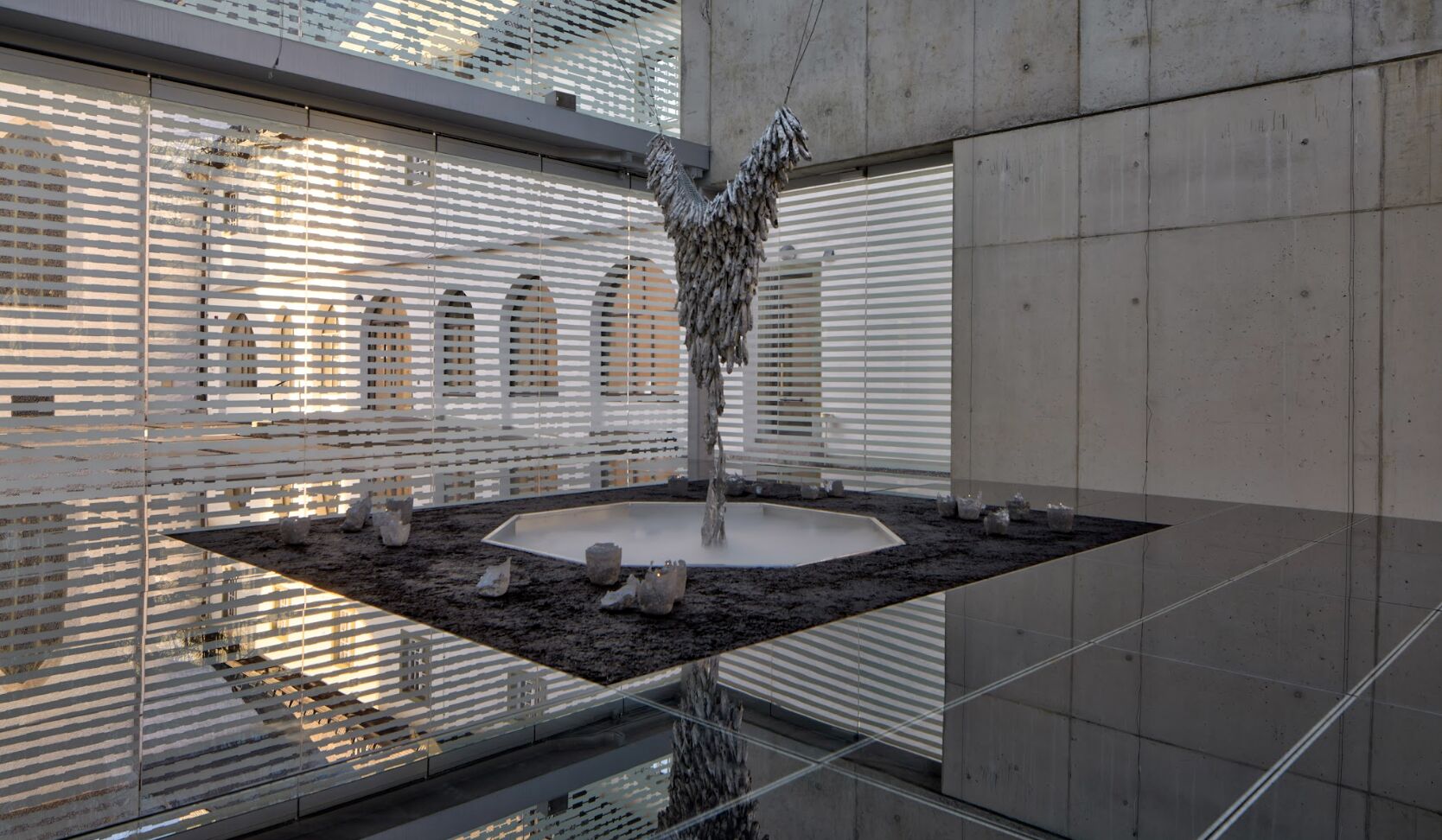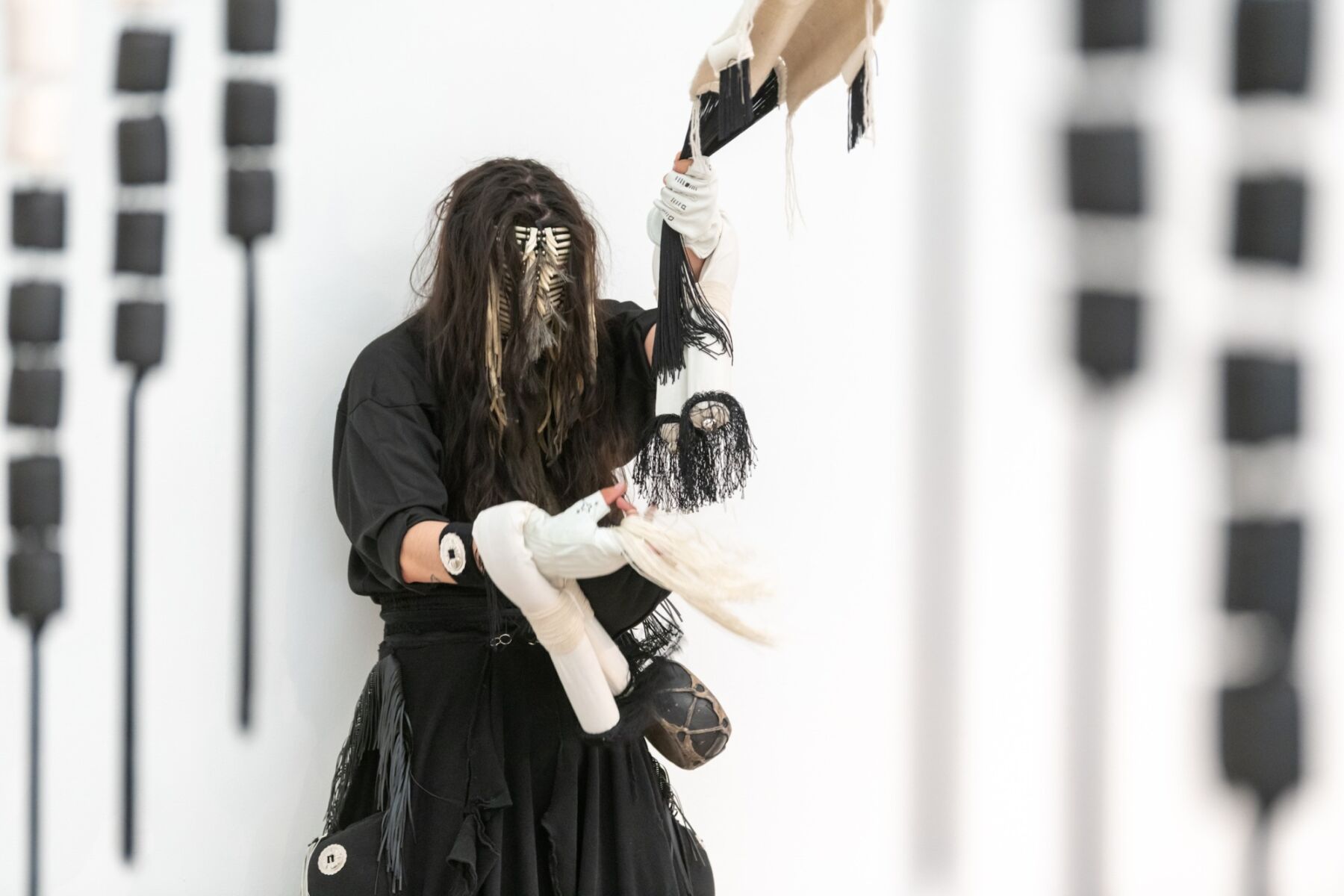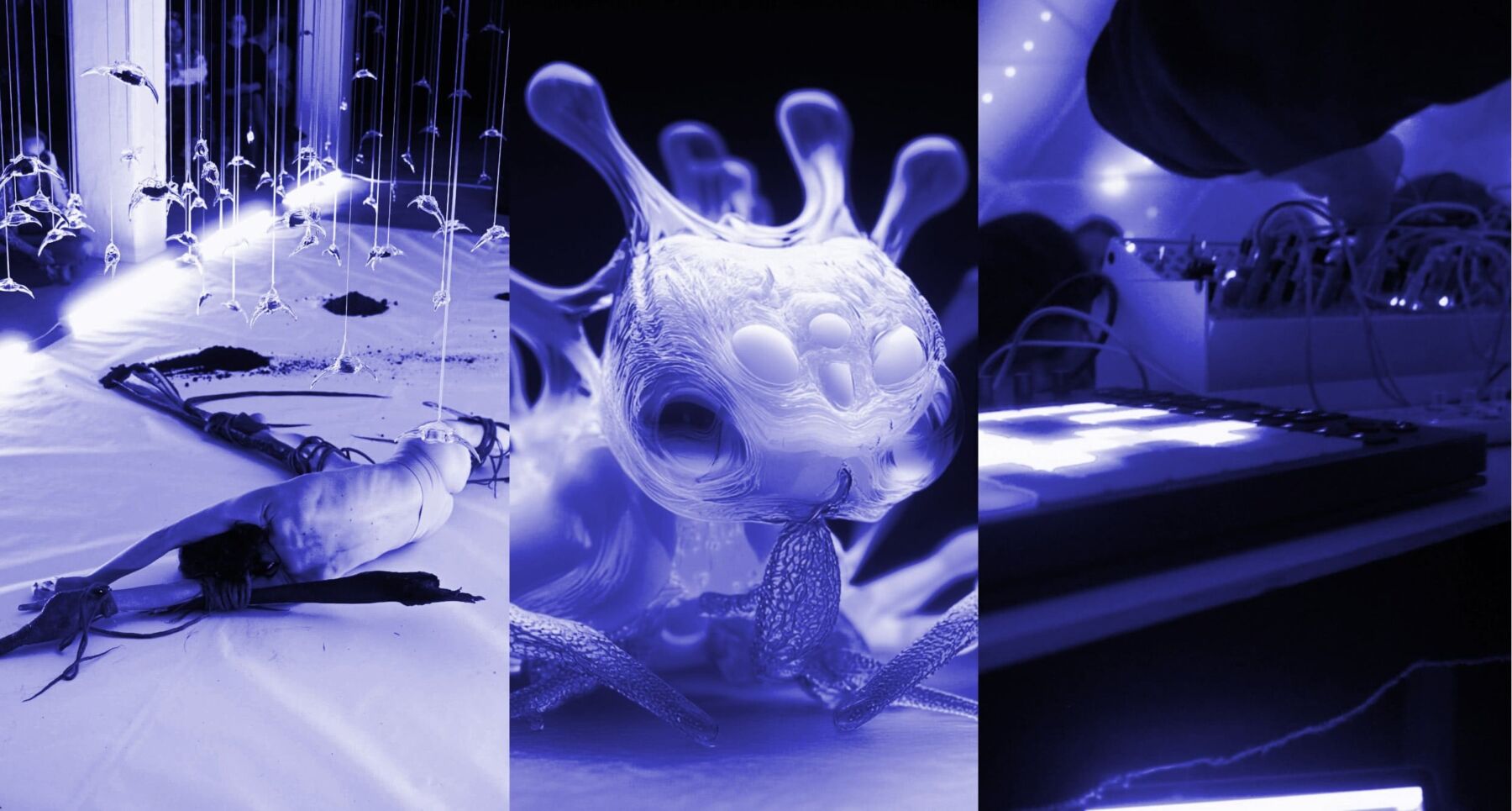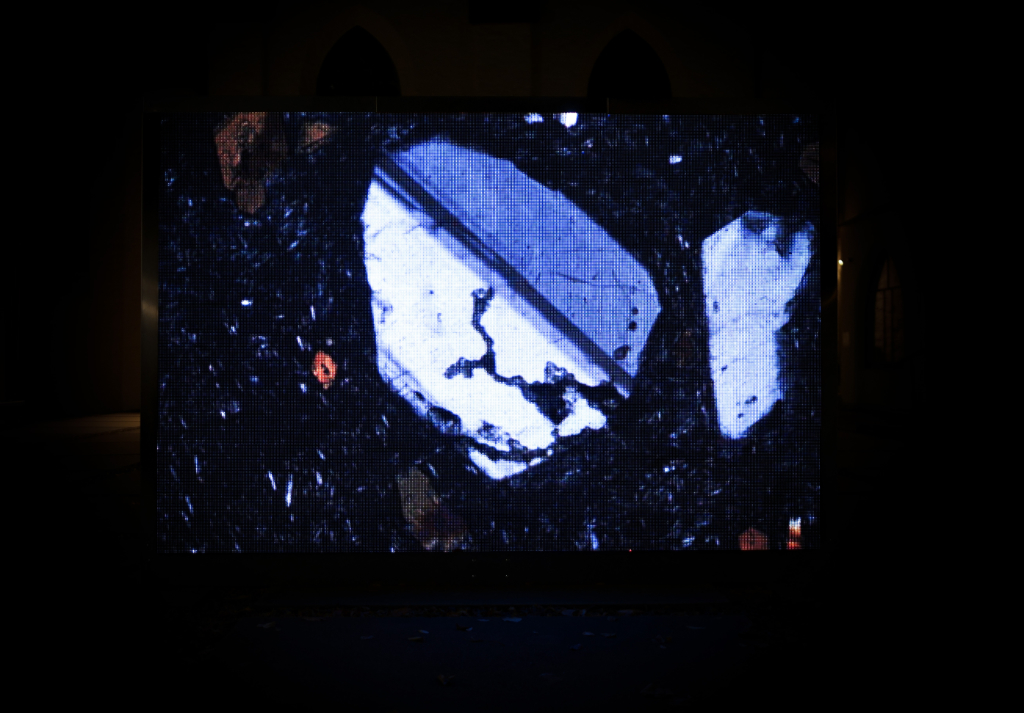Interview by Agata Kik
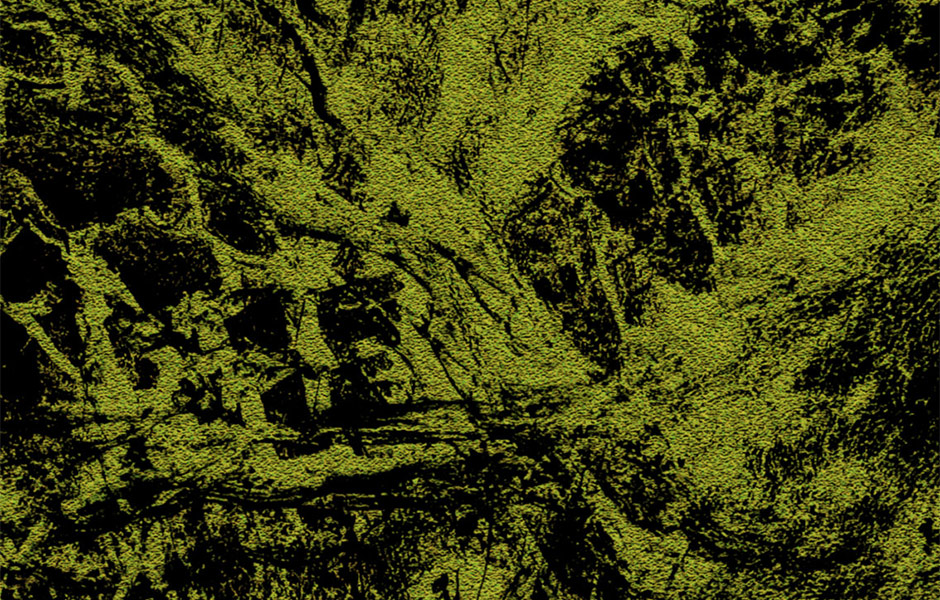
Nicola Serra is a London-based musician known as IlSantoBevitore, who, besides his music practice, curates the Dronica festival (famous for its peculiar location at the Old Church in Stoke Newington, North London). At the core of Nicola’s music practice are drums, percussion, and electronic devices. His two latest EPs, Madrighe’ and ‘Realm of Consciousness’ released in 2018, reveal a ritualistic spirit, which the artist revives in his music and his curatorial practice by turning the interiors of a church into a venue for a gig.
The records by IlSantoBevitore, are like modern Mediterranean mantras, featuring drum beats, guitar echoing, synthesised reverberations and voice, whose whispering heightens the shamanic feel. Nicola hypnotises or even puts his listeners into a trance with repetitive vibrations.
Listening to his music is like immersing in a mental journey through sculptural sonic high and low pitches landscapes. Not only do the records capture the dizzying topography of Sardinia Island, but also, they are saturated with ancient themes of the island’s history. In one album, for example, the artist refers to ‘berbos’, the Sardinian magic prayers, which express the necessity to protect a community’s livelihood.
Stemming from his thorough ethnomusicological research, the eclectic resonance of Nicola’s music practice is matched by the stylistically wide-ranging character of the Dronica festival. During the last edition of 2018, Dronica #9, at the Old Church, one could encounter a phonic plurality of styles, from neo-classical to noise, from hip-hop to drone, and from ambient to techno, to name only a few.
The characteristic that united them all was the level of experimentality, greatly influenced by the sacral locality. As a curator of such a distinctively developed festival programme, Nicola gives every participating artist a chance to explore the uniqueness of frequencies, which the church’s walls have the ability to reflect.
Serra achieves these mesmerising moments by uniting all kinds of music genres’ followers of all ages in this London’s only surviving Elizabethan church. The audience comes back to the church two or even three times a year for every next reiteration of the festival, like for those who would come every Sunday to pray, also for the public returning for consecutive Dronica editions, like for a ritualistic gathering, spirituality is an inseparable part of the experience.
Once one crosses the threshold of the solid stone fundament, from cold silence, straight into noise enlivening the atmosphere, one enters the sphere of release. From respectfully reclining bodies on the rugs on the floor to the dark figures warming up their lungs above Renaissance graves, Dronica is a freeing space. Through his curatorial practice, Nicola gives freedom not only to the artists, who exploit it in their work but also to the audience, who receive the creative output while immersed in the all-embracing wavelengths of vibrating air.
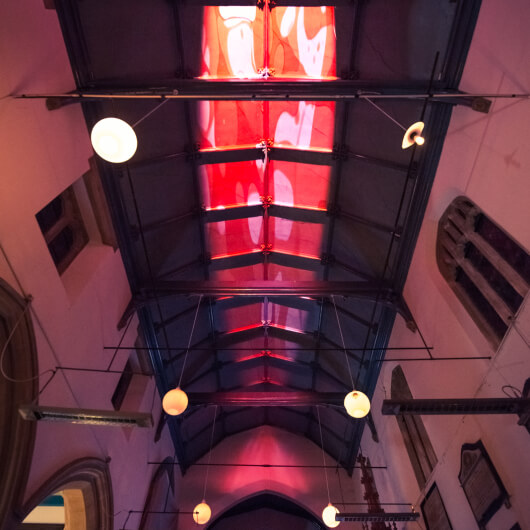
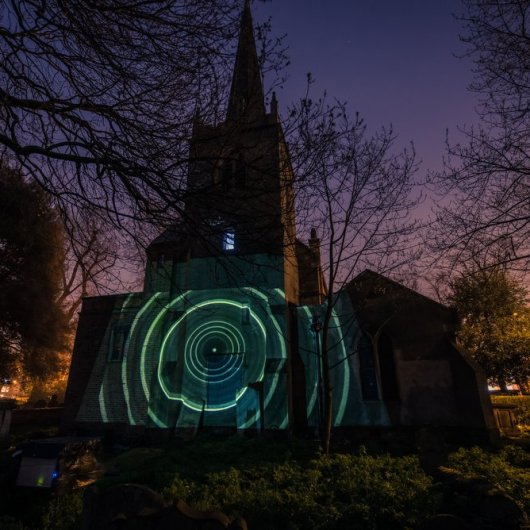
Could you tell us a little about your artist background and how Dronica Festival came about?
I grew up playing the drums and
From metal to rock, post-rock, then more electronic, almost tribal. About seven or eight years ago, I started to extend my musical horizons to more electronic music and the most ‘extreme’ side of music and art. I slowly started digging for some electronic equipment, and then, finally, I decided to enrol in a music production course, mainly teaching music technology.
I did a one-year diploma, and after that, I worked hard to find a job in the music industry. For over a decade, I have been maniacally researching music daily. I am really into that. I spend more time researching the music as a listener than actually playing an instrument. Maybe because of that, there came the idea of creating a new platform to share with other musicians, to create a sort of community and a place where people and artists can come and feel as free as possible to experiment without being judged. This is one of the reasons I probably started the
Obviously, when Dronica started, it was quite different from how it looks now. Not quite different stylistically, but definitely, it was a simpler format. I remember the first edition was more intimate, an experiment overall. As we all know, London is a unique and very busy city. There is so much going on pretty much every day, but always a good place to create something new. Nowadays, Dronica is a very eclectic festival. They have very different styles and very different artists but are always aligned, as all glued together. Nothing is random. All are studied and planned. All of them are under the same umbrella, let’s say.
How do you program the festival as its only curator? How does it all connect, and how do different editions respond to each other?
I reckon every festival/event reflects the curator’s vision. The program obviously reflects my vision, what I like and maybe dislike. I carefully select the artists I would like to host. In every edition, we try to implement new stuff and use the space potential as much as possible. We do not just hire the space. We use the space, always trying to get the best we can.
However, in respect of the sacred place, the Old Church. Edition by edition, we are trying to challenge ourselves, implementing something new, and changing the format and trying to take the audience by surprise. ‘Oh, this time, it was a little bit different. I did not expect that. By making things more interesting and challenging yourself, I think you will also see what works and what does not. Experimenting. Improving.
Regarding the artistic collaborations through your art practice as a musician, do you create alone, or do you have any collaborations?
I am a music producer under the moniker of IlSantoBevitore. In the works I have released so far, some other musicians have always been involved. These collaborations give it some fresh input. Even though it is a one-man project, it is like the festival again. You curate something, and then you ask someone to collaborate, help, to be involved without necessarily changing the nature you want the project/festival to be. But then, obviously, they put some fresh input in it, some energy, some input that you did not even think about. That is very important.
What about the church context and the relationship between man, technology and spirituality? Do you have any thoughts on that?
I come from a Mediterranean country, where religion is very much in our society. Back home, it would be almost impossible to do what we did with Dronica in a church as it would probably look quite blasphemous. There is a connection between modern technology and electronics and man-spirituality, that is for sure. I see technology as a great tool of expression that can help interpret and enhance our ancestral background.
And Dronica is a medium of music and art, like a ritualistic meeting, where people go to, experience something, share emotions, and the community grows up.
In this context, in the role of a curator, you influence the artworks, the music, and the sound that artists would never be able to experience or play in this way otherwise. It is the potential for them to experiment with this kind of environment.
Sound-wise, the church is very unique, with a nice natural reverb. I had the pleasure to play there actually last November for another event. It was for the label that released my latest EPs, actually. It was the second time I played at the Old Church. I can tell that frequency-wise, it is unique. It is magic. Musicians love to play there because they know that it is going special.
What has been the response to Dronica? Could you tell me something about the audience, who you direct this to, and how it changes throughout the festival?
Since Dronica started, the festival has changed quite a lot. I think the first two editions were more intimate, and the audience was
Nice response on social media and press lately. The audience varied from young to older, very different, as eclectic as the program is. Edition after edition, more and more people are interested in the music and program of the festival.
Let’s talk about the future, as we have just experienced the last edition of this year. Do you have any plans for 2019?
Yes, I do. I think there will be two or three editions. Maybe a twist on the format. There might be some surprises. Who knows? Work in progress! We are also planning some collaboration as a side project for the following two years.
What would be your biggest curating extravaganza?
Dronica is a good example of an extravaganza, I guess. At least as some people perceived it. The program is quite vast and so eclectic. I would love to have the chance to curate an event in
I think what you do within the space/to the space itself is everything. Leaving a trace, yeah. You would need to have the right venue, and they have to allow you to do whatever you like; then, you can customise the event more and more, turning it into something else.
As we know, the Old Church is a unique space, one of the oldest churches in London. But I do believe Dronica is a separate entity. A collective of ambitious and passionate artists. We have built up something and shaped it for the Old Church. I created an event, a solid organization under an artistic vision, and then we all shaped it within the Old Church using the space as much as we could.
The space itself is very important, but to me, the most important aspect is how you use that space. Having a great tool is a crucial starting point, but in the end, what you do with these tools is very subjective, very personal. That makes the difference, really.
What is your chief enemy of creativity?
Time and budget.
You couldn’t live without…
Music.



